# Dimension Table Attributes and Virtual Attributes
# I.The Significance of Dimension Table Attributes and Virtual Attributes
For event attributes and user attributes that have already been reported, the previously uploaded data can be mapped to another display value or calculation value by uploading dimension tables or setting virtual attributes, so that the attribute value at the initial burial point is not the same as the display value, and the data can be processed later to increase flexibility. Dimension table attributes and virtual attributes can be used in filter conditions and group items of analytical models.
# II. The Scenarios for the Use of Dimension Table Attributes and Virtual Attributes
Dimension table attributes: In data collection, channels may be recorded through channel numbers, such as A01 for Xiaomi channels (Xiaomi Application Mall) and A02 for Baidu channels (Baidu Mobile Assistant). If you want to use Chinese in the analysis, you can create a dimension table attribute for the 'channel' attribute and set the Chinese name corresponding to the channel number in the dimension table. When making calculations, you can use the dimension table attribute 'channel name' corresponding to the Chinese name.

Virtual Attributes: When data is collected, the amount paid is recorded in "cents" as a unit. If you want to use "yuan" as the unit for calculation, you can create virtual attributes that generate new attributes of the payment amount converted to "yuan" via SQL rules (value is 1/100 of the original attributes).
# III. Concept and Authority of Dimension Table Attributes and Virtual Attributes
# 3.1 Basic Overview of Attribute Types
- System Attributes: System fields inherent in the Event Table and User Table, such as Event Time, Account ID, etc., must start with the # number.
- Pre-set Attributes: During data access, SDK-generated fields such as IP, country, etc. must start with the # number.
- Custom Attributes: Customize the uploaded attributes, such as the amount paid, according to business needs, not start with the # number.
- Virtual Attributes: New attributes generated through SQL rules.
- Dimension Table Attributes: By uploading newly generated attributes based on existing attributes, such attributes may disappear due to coverage.
Note: Data types are text, numerical value, time, Boolean, list , object, object group seven kinds, object and object group type attributes themselves can not upload dimension tables, but can upload dimension tables based on the following sub-attributes.
# 3.2 Use Permission
| Company Supervisor | Administrator | Analyst | Ordinary members | |
|---|---|---|---|---|
| Edit dimension tables, virtual properties | ● | ● | ▲ | ○ |
| Download dimension table | ● | ● | ▲ | ○ |
| View virtual field creation rules | ● | ● | ▲ | ○ |
Permission description:
● Role must have
▲ The role has the permission by default, but can revoke
△ The role is not available by default, but can be authorized
○ Role must not have
# IV. Create Dimension Table Attributes and Virtual Attributes
# 4.1 Create an Entrance
Event attribute management and user feature management in 'Data Management' can be used to create dimension tables and virtual attributes.
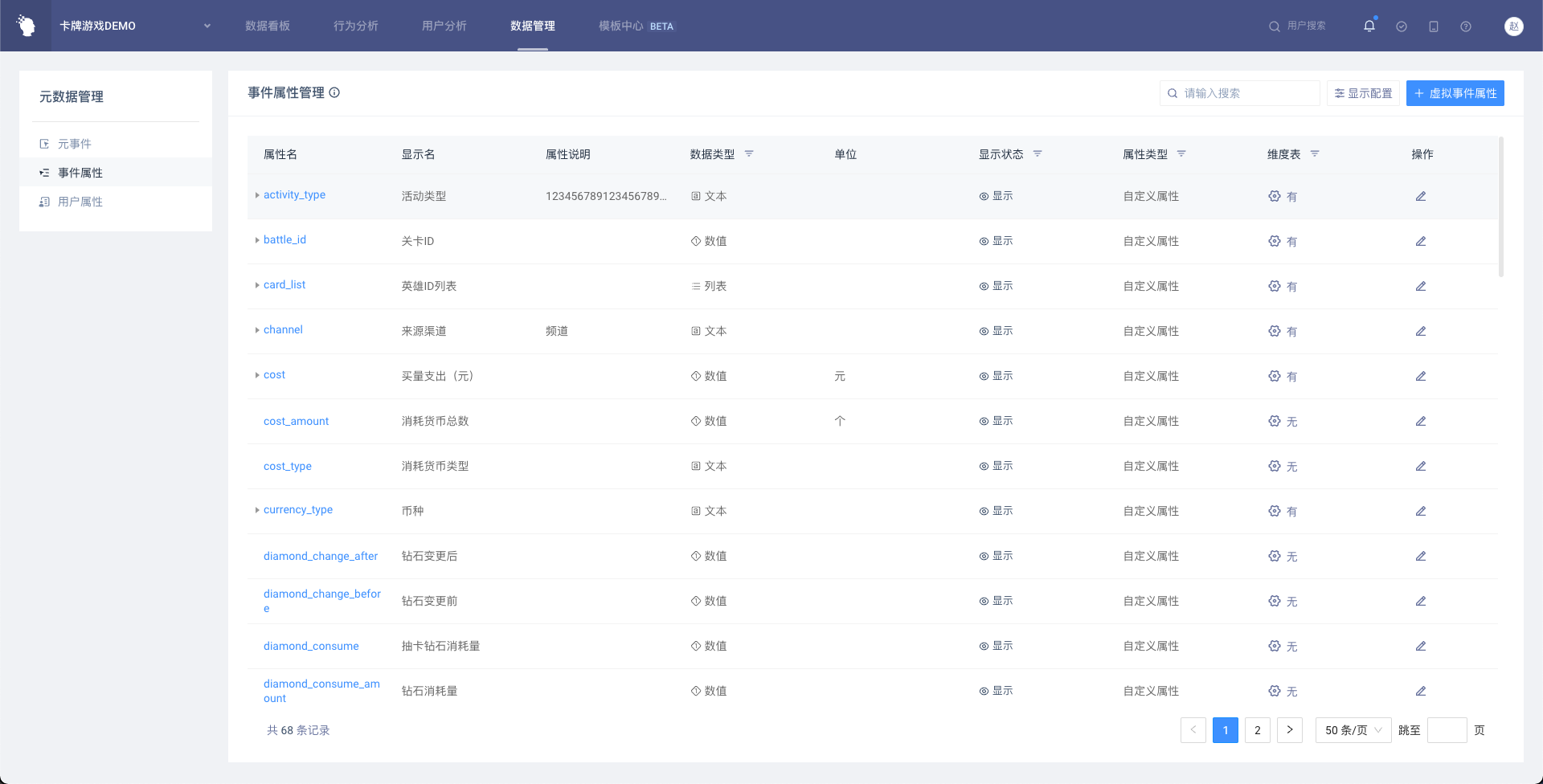
# 4.2 Upload Dimension Table
- Please select 'Upload' dimension table attributes on the original attribute field where you need to add dimension tables.

- Specific rules for dimension table files
- The content of the first line will be the field name of the dimension table attribute, which needs to start with English and consist of English, numbers or "_"
- The first column will be associated with the original attribute, and the value needs to correspond to the original attribute value, and the value is guaranteed to be unique. In case of duplication, the first article shall prevail, and subsequent duplicate information will be discarded.
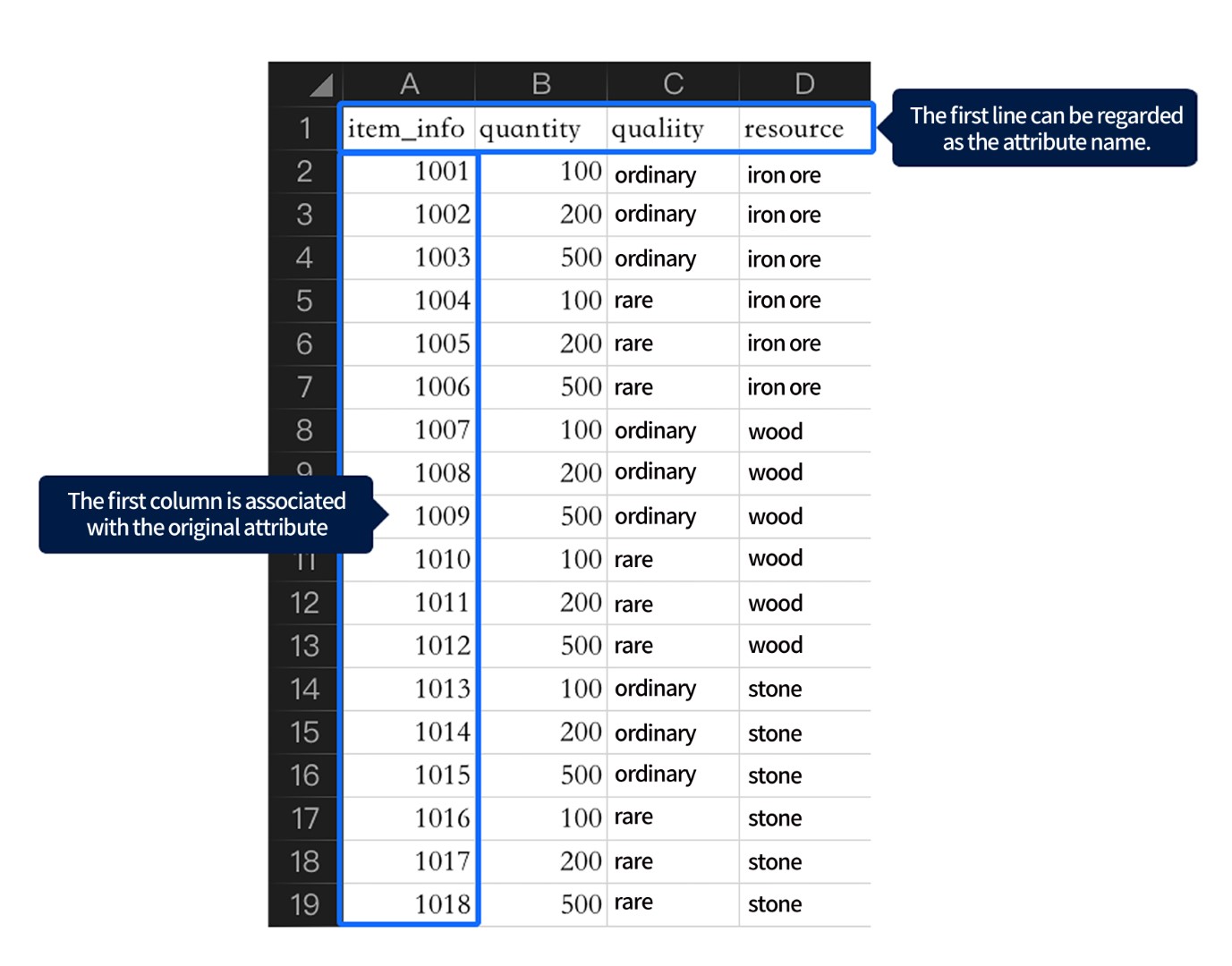
- Save the csv file in UTF-8 encoding format
- Excel save method
Use UTF-8 encoding format when saving according to the following hint, the file type is CSV file.

- Notepad preservation method
According to the following hint, select UTF-8 for encoding, and change the file type to CSV file.
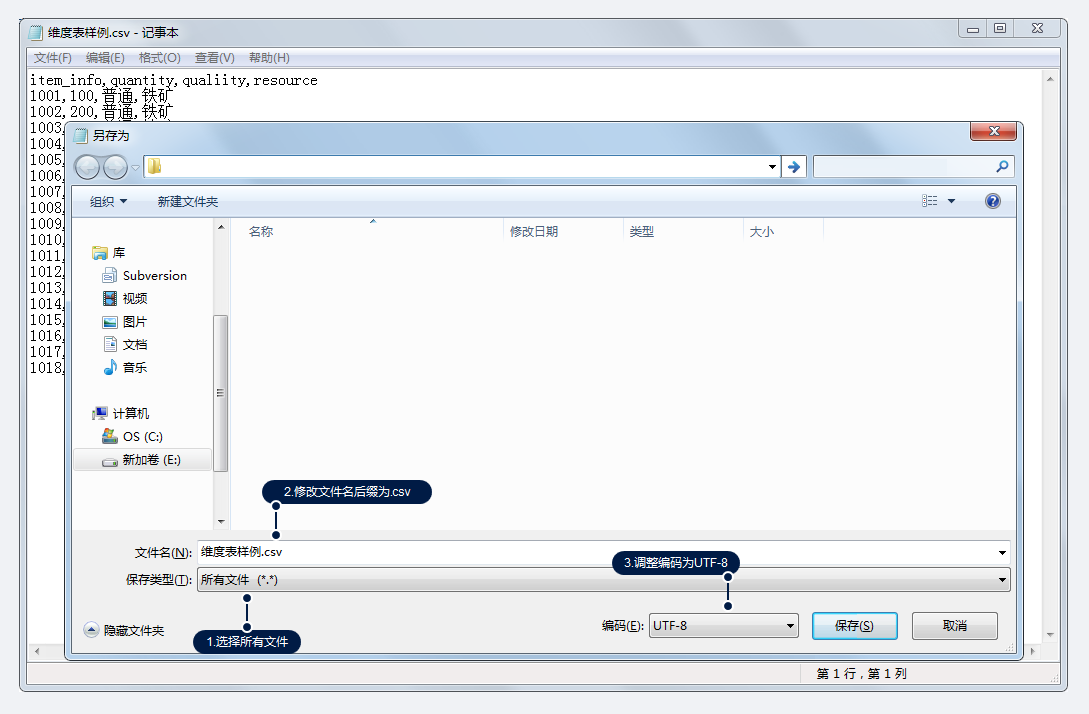
- Add the dimension table file to the upload location
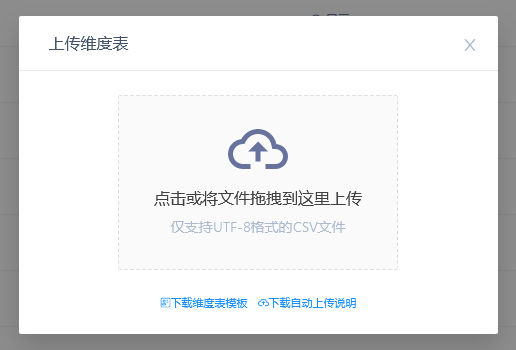
- Fill in the display name and field type
Fill in the mapped dimension table field display name and type as required.
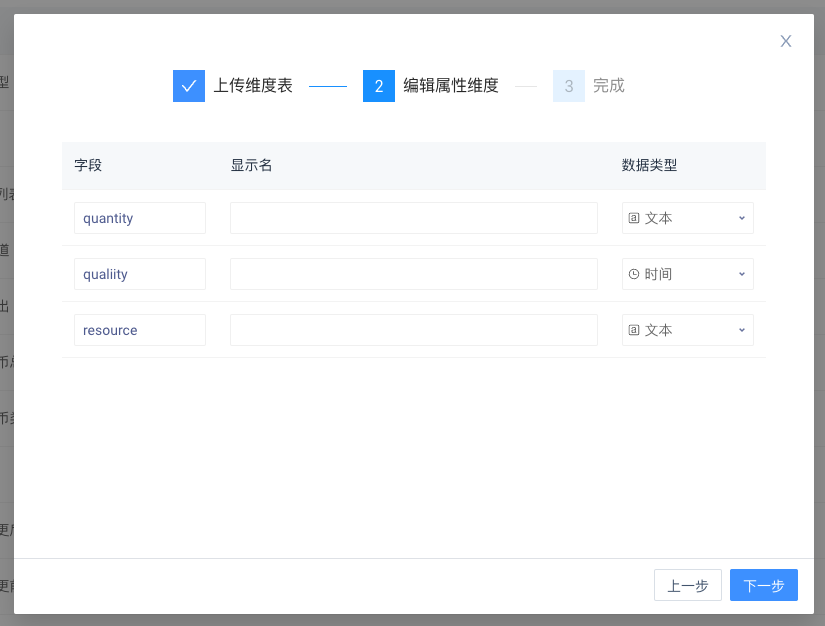
- System analysis situation prompt
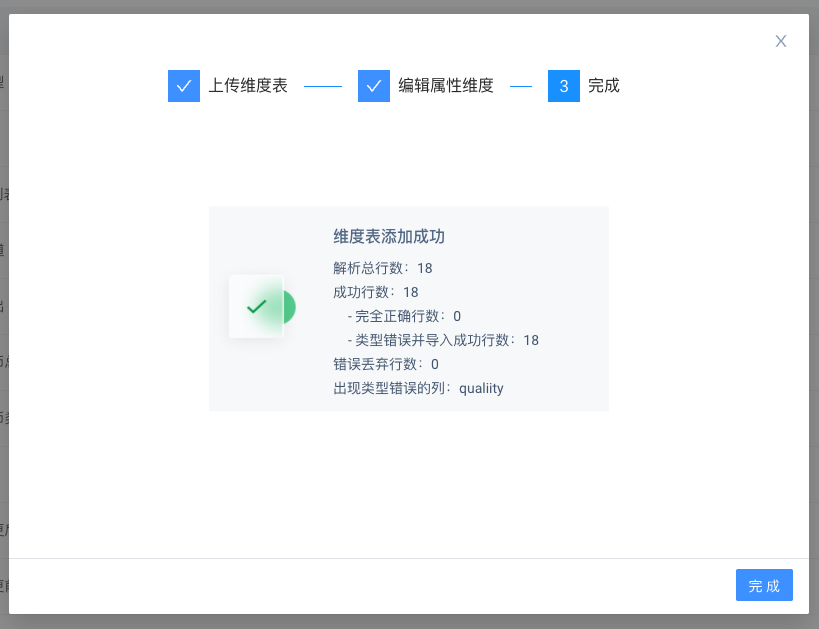
- After completion, you can find the newly added dimension table attributes in the list

- The dimension table attribute can be used for analysis in the model

# 4.3 Use TA OpenApi to Create Dimension Tables and Update Regularly
See the instructions in the Dimension Table API for details
# 4.4 Create Virtual Attribute Process
- Fill in basic information
The attribute name begins with "#vp" and is not editable. Fill in the attribute name and display name.
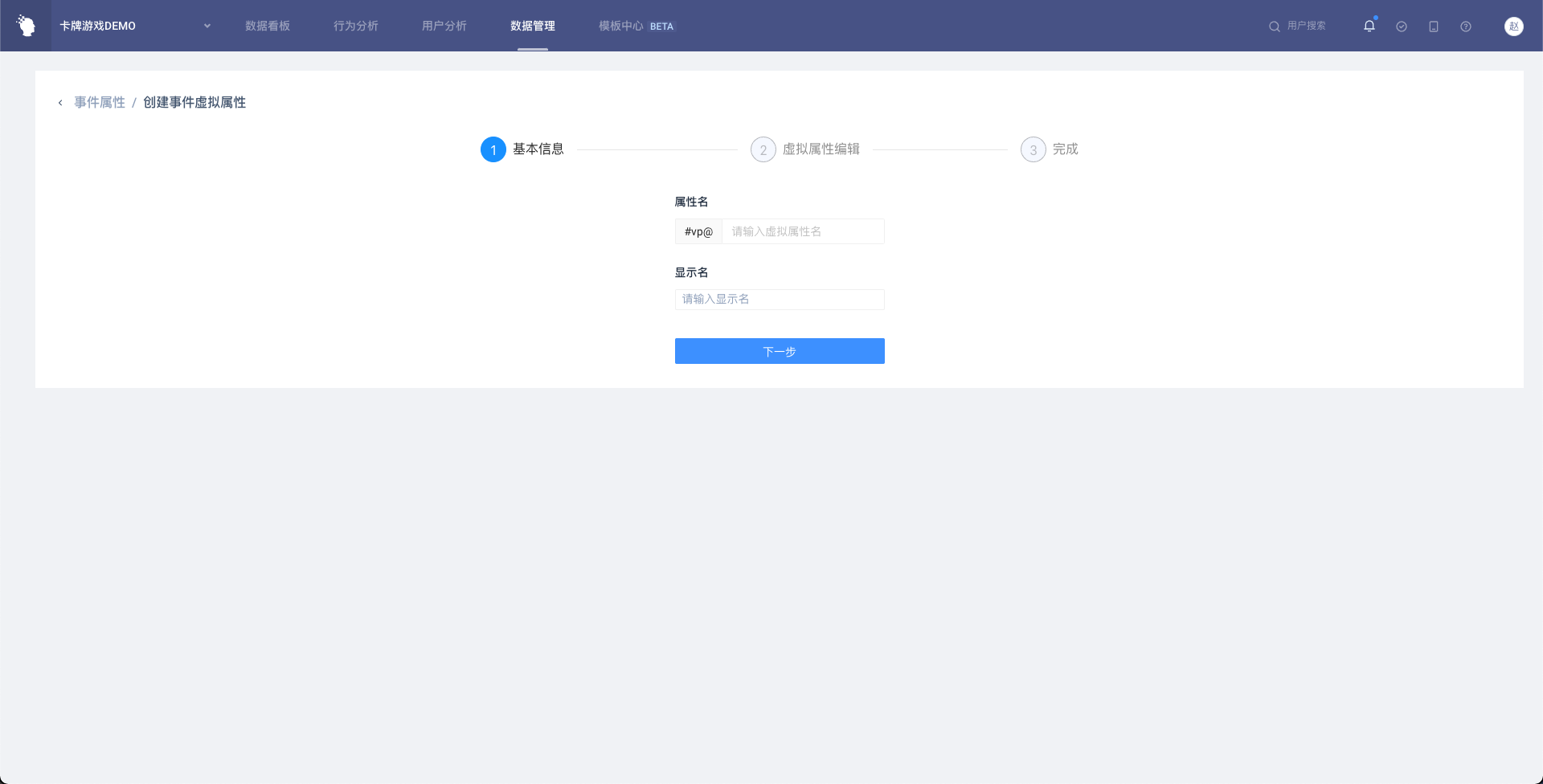
- Edit the creation rules of virtual attributes
You can quickly get the information of the attribute in the list on the left, and select the type of the attribute and which events the attribute is associated with in the upper half of the interface (only the virtual event attribute is optional)
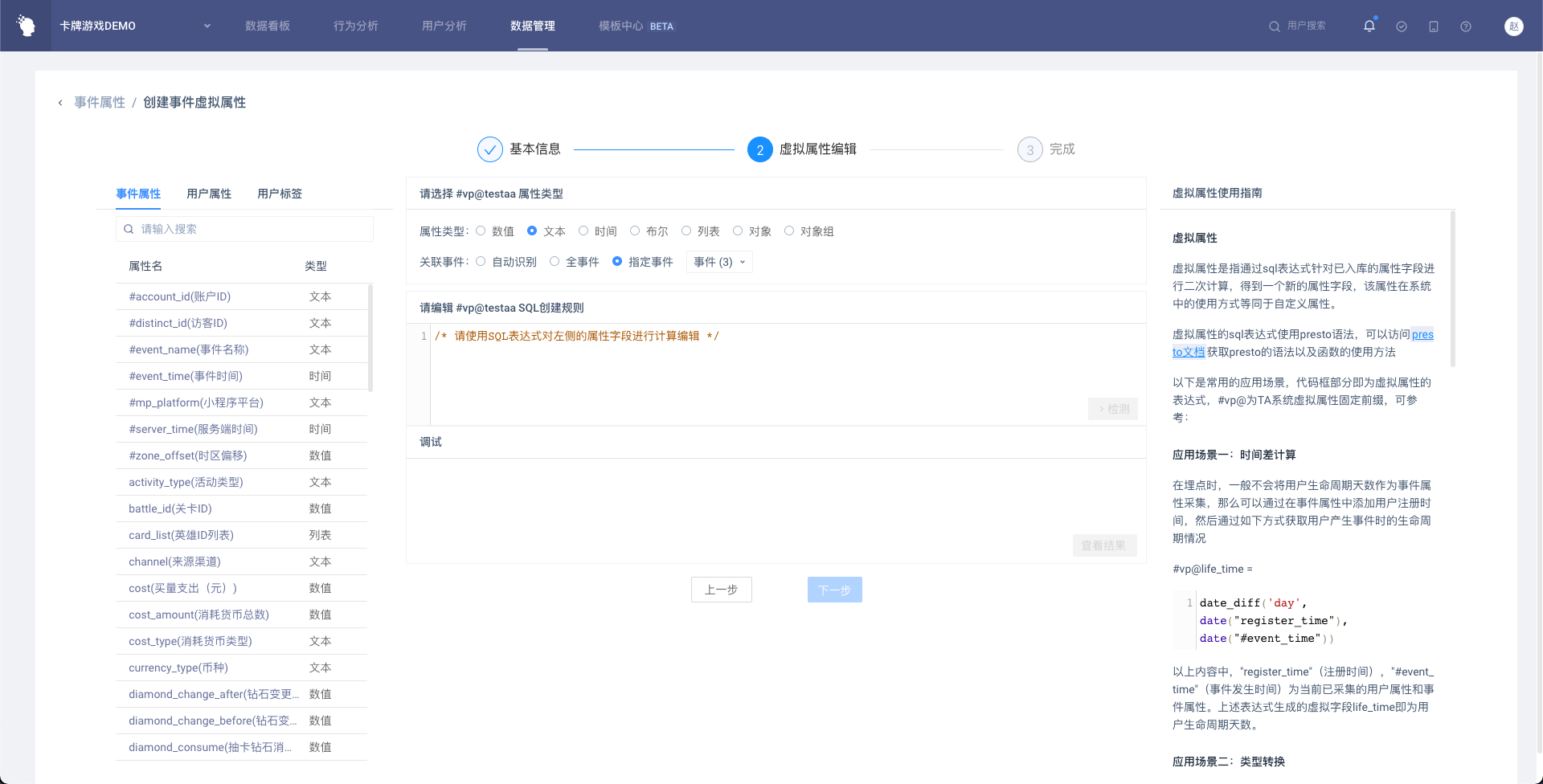
- Logical check

After inputting the content, you can click 'Check' to check the syntax. If the check is successful, a value input box for the attribute will appear in the 'Debug' section. If a tag is used in the SQL rules, you can select the version used by the tag. Each tag can be set separately. When the tag has no historical version, the latest version is used by default; If virtual user properties are created, only the latest version of the label can be used and cannot be modified. For more information about tags, see User tags
- Latest version: Calculated according to user's latest tag value
- Dynamic Matching: Calculates based on the tag value of the user on the day of the event
- Historical Version: Calculated by the user's tag value on a specific date
After entering the check value to view the calculation result, you can check whether the result meets the requirements. If it meets the requirements, you can click 'Next' to complete the attribute creation, and if there is a gap with the expectation, you can modify the creation rule and repeat the check.
# 4.5 Precautions
- Dimension table attributes and virtual attributes do not occupy the number of attributes.
- In one project, the maximum number of dimension table attributes that can be created is 3000, and the maximum number of virtual attributes that can be created is 3000.
- In SQL rules for virtual event properties, only one version can be selected for the same tag.
- There can be no nested logic between virtual attributes, including the following scenarios:
- Virtual attributes cannot be used in the creation logic of virtual attributes.
- The dimension table attribute associated with the virtual attribute cannot be used in the creation logic of the virtual attribute.
- The tag of the analysis subject from which the virtual attribute is the source cannot be used in the creation logic of the virtual attribute.
- Virtual attributes that contain dimension table attributes in the creation logic cannot upload dimension tables.
- The following scenario cannot upload the dimension table:
- The data type of this attribute is an object or group of objects
- The attribute type of this attribute is a dimension table attribute
- The attribute type of this attribute is a virtual attribute, and the dimension table attribute is used in the generation rule
- The attribute type of this attribute is the event virtual attribute, and the user feature or user dimension table attribute is used in the generation rule
# V. Usage of Dimension Table Attributes and Virtual Attributes
# 5.1 Manage Dimension Table Attributes and Virtual Attributes
You can manage dimension table properties and virtual properties in the event property management or user feature management page.
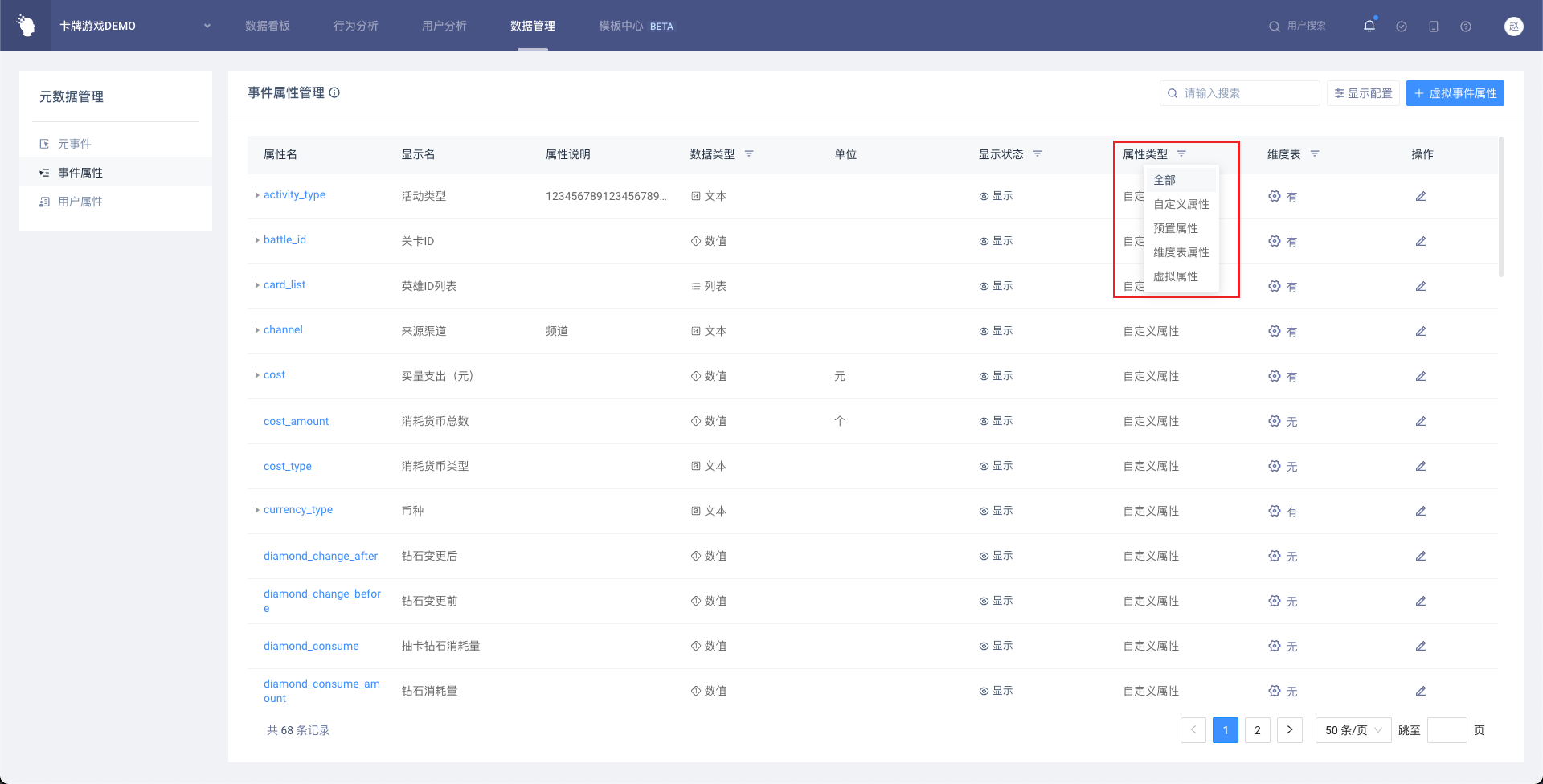
# 5.2 Notes for Use in Models
Dimension table attributes and virtual attributes are consistent in use with the usual attributes, and their calculation logic and filtering conditions are determined according to the type
- The dimension table attribute of the event attribute can be used in the event associated with its original attribute
- Virtual event attributes can be used when calculating the events associated with them, and the relationship can be customized
- The dimension table attributes of the user feature and the virtual user feature, the available scenarios are equivalent to the general user feature
- Event list, user list, user behavior sequence
# 5.3 Download and Delete
# 5.3.1 Download Dimension Table
Users with analyst and above permissions can download the dimension table. CSV format file.
# 5.3.2 Delete Dimension Tables and Virtual Attributes
Dimension table attributes can be deleted by selecting the 'Delete' option from the options popped up by clicking the button.

Virtual properties can be deleted by selecting the "Delete" button in the action column

# VI. Best Applications
# 6.1 Translation Through Dimension Tables
For attributes whose values are English or IDs, it is often cumbersome to look up tables for use in analysis. Create dimension tables for these attributes, introduce corresponding Chinese names through dimension table attributes, and use the newly introduced Chinese attributes for analysis. If multilingual usage scenarios exist, more linguistic dimensionality attributes can also be introduced to meet the needs of language users.
# 6.2 Introduction of Additional Information to Dimension Tables
In addition to translation, dimension table attributes are often used to introduce more information used in calculation, such as the time at which the activity started, the weather of a certain day, the exchange rate, etc., can also be introduced through the dimension table and used as a filter condition, group item or calculation value in the analysis.
# 6.3 Virtual Attribute Process Data Format and Type
Due to the use of SQL expressions, virtual attributes have very powerful scalability, but the most common ones are still format or type conversions of original attributes, such as unit conversion of amount, exchange rate conversion, truncation, extraction or splicing of strings, and conversion on attribute type.
